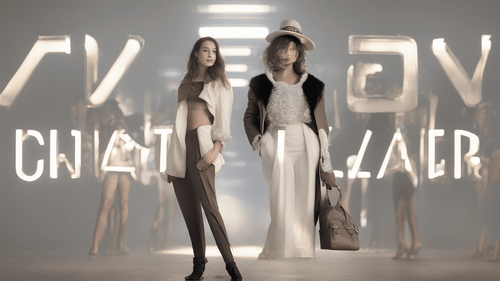
In the rapidly evolving landscape of artificial intelligence, one remarkable breakthrough has captured the imagination of innovators and creators alike: turning text into images using AI. This cutting-edge technology, often referred to as "Text-to-Image AI," has sparked a revolution in visual communication, enabling the transformation of textual concepts into vivid, tangible visuals. In this comprehensive guide, we delve deep into the world of turn text into image AI, exploring its mechanisms, applications, and the transformative impact it holds across diverse industries.
Understanding Turn Text into Image AI
What is Turn Text into Image AI?
At its core, turn text into image AI is a sophisticated process that leverages advanced artificial intelligence algorithms to convert textual descriptions, prompts, or concepts into visually coherent images. This revolutionary capability bridges the gap between language and imagery, allowing AI systems to generate rich, contextually relevant visuals based on textual input.
How Does Turn Text into Image AI Work?
The inner workings of turn text into image AI are a fusion of natural language processing (NLP) and computer vision technologies. This intricate interplay involves the AI system analyzing the input text, deciphering its semantics, and then translating those semantics into visual elements. Through deep learning and neural networks, the AI model learns to generate images that encapsulate the essence of the provided text.
The Impact and Significance of Turn Text into Image AI
The emergence of turn text into image AI has ushered in a new era of visual storytelling and communication. Its potential applications span a wide spectrum of industries, including marketing, design, education, entertainment, and more. This technology empowers creators to visualize abstract concepts, enhances engagement, and offers a fresh perspective on content creation.
Applications of Turn Text into Image AI
Marketing and Advertising
In the realm of marketing, turn text into image AI has revolutionized campaign ideation and content creation. Marketers can now effortlessly translate marketing copy into compelling visuals, fostering stronger connections with audiences and driving higher conversion rates.
Educational Aids and Learning
Educators are embracing turn text into image AI to enrich educational materials. Complex ideas that were once challenging to convey now come to life as vivid images, making learning more engaging and accessible for students of all ages.
Creative Design and Artistry
Artists and designers are leveraging this technology to amplify their creative expressions. By turning text descriptions into visual masterpieces, designers can quickly iterate on concepts and breathe life into their imaginative visions.
Storytelling and Entertainment
The entertainment industry is harnessing the power of turn text into image AI to enhance storytelling. Authors, scriptwriters, and game developers can now visualize scenes and characters, adding an extra layer of immersion for their audiences.
Challenges and Future Possibilities
As with any transformative technology, turn text into image AI also presents its own set of challenges. Ensuring the generated visuals accurately reflect the intended context remains a crucial focus. Striking the right balance between automation and creative control is an ongoing endeavor.
Looking ahead, the future holds exciting possibilities for this technology. Continued advancements in AI research could lead to even more sophisticated models capable of generating highly detailed and contextually nuanced images.
Frequently Asked Questions (FAQs)
Is Turn Text into Image AI Similar to Image Captioning AI?
While both technologies involve AI-generated images, they differ in their primary objectives. Image captioning AI generates textual descriptions for existing images, whereas turn text into image AI focuses on creating images from textual input.
Can Turn Text into Image AI Understand Complex Concepts?
Yes, turn text into image AI has shown remarkable capabilities in understanding and visualizing intricate concepts. Its performance relies on the quality and diversity of training data.
Are There Limitations to the Generated Images?
Generated images may sometimes lack fine details and exhibit minor inconsistencies. However, advancements in AI and larger datasets are gradually mitigating these limitations.
How Does Turn Text into Image AI Benefit Content Creators?
Content creators benefit from increased efficiency and enhanced creativity. Turn text into image AI streamlines the process of visual content creation, enabling creators to focus more on refining ideas.
What Industries Stand to Gain the Most from Turn Text into Image AI?
Industries such as marketing, education, design, and entertainment are poised to experience substantial gains from turn text into image AI. Its versatile applications make it valuable across diverse sectors.
What Ethical Considerations Surround This Technology?
Ethical considerations include potential biases present in training data and the responsible use of AI-generated visuals. Ensuring transparency and accountability are essential in harnessing this technology's potential.
In Conclusion
Turn text into image AI stands as a testament to the remarkable strides artificial intelligence has taken. Its ability to bridge the gap between language and imagery opens doors to a myriad of possibilities across various domains. From enhancing marketing campaigns to revolutionizing education, the impact of this technology is profound.
As we venture further into the era of AI-driven innovation, turn text into image AI exemplifies the fusion of human creativity and technological prowess. The journey of turning text into vivid images has just begun, promising a future where ideas find their visual form with unprecedented ease and brilliance.